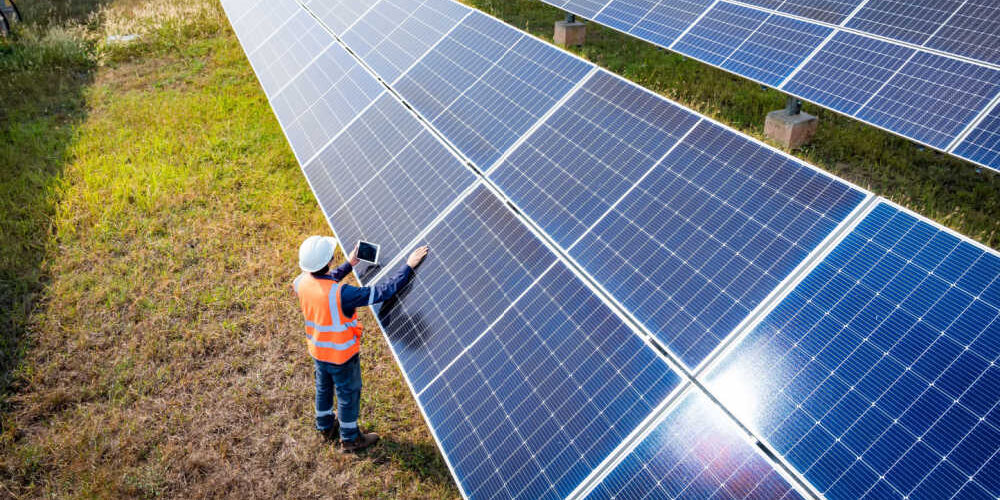Despite offering significant energy resources, access to financing remains one of the key challenges facing energy projects in the MSGBC region. Fortunately, there are various financing avenues emerging, presenting new opportunities for MSGBC governments and project developers alike to leverage the full potential of regional resources. Traditionally, energy projects in the region have been financed by international banks, development finance institutions (DFIs) and by project developers themselves.
These institutions provide loans, guarantees, and equity investments to project developers. Examples include the World Bank’s Regional Emergency Solar Power Intervention Project – a $311 million solar project to increase grid-connected renewable energy capacity in West Africa – and the raising of capital by energy majors Kosmos Energy and bp through the sale and lease back of the Greater Tortue Ahmeyim floating, production, storage and offloading vessel. However, the high level of risk associated with energy projects as well as global pressures to transition away from oil and gas has made it challenging to secure financing. To address this issue, project developers are exploring alternative financing options.
Developers Turn to Blended Financing
A viable financing solution that has emerged is blended financing – a strategy where concessional public finance is combined with private capital to create a financially viable and sustainable project. The main objective of this financing method is to mobilize resources, reduce the risk for private sector investors, and increase the sustainability of development finance. This approach involves the use of subsidies, grants, loans, and equity investments to leverage commercial investments and achieve developmental objectives. It can be effective in achieving sustainable development goals, but it requires careful design, implementation, and monitoring to ensure that it is utilized effectively and transparently.
Alternative blended financing instruments include public-private partnerships (PPPs) and project bonds. PPPs involve collaboration between the public and private sectors to finance and operate energy projects while project bonds are issued by project developers and backed by project cash flows.
Green Financing Drives MSGBC Investment
In recent years, there has been a surge in interest from investors in green financing. This trend is driven by the increasing focus on sustainability and climate change. As a result, green bonds – debt instruments that are used to fund environmentally friendly projects, including renewable energy projects – have become a popular financing option for renewable energy projects.
The African Development Bank (AfDB) has played a crucial role in promoting growth through green bonds, as well through other financial instruments. Its approach is centered on two main goals: to encourage inclusive growth and ensure that such growth is sustainable. The AfDB’s aim is to aid Africa’s transition to green growth, which would safeguard livelihoods, enhance food and energy security, foster the sustainable use of natural resources, and stimulate innovation, job creation, and economic development. The AfDB introduced its green bond scheme in 2013 to support these policies and has been issuing bonds every year since then. As such, the bank has played a critical role in supporting energy projects in the region, including the construction of the 158 MW Taiba N’Diaye wind farm in Senegal.
Leveraging Regional Corporations
Regional organizations such as the African Energy Investment Corporation (AEICORP) have and continue to play a vital role in driving energy developments in the MSGBC region. A regional energy infrastructure development company established by the Economic Community of West African States Commission, the AEICORP is largely focused on developing and financing energy infrastructure projects in the region. AEICORP has played a key role in supporting the development of regional projects including the West African Power Pool – a regional power transmission network.
Additionally, institutions such as the AfDB have been spearheading MSGBC energy developments by providing financing for projects across the entire value chain. Since 1972, the institution has extended $448 million in investment to Guinea-Bissau; delivered 116 projects in Senegal; while boasting a current portfolio worth €300 million in Mauritania. Such organizations continue to be key to getting energy projects off the ground.
Crowdfunding Unlocks Energy Prospects
Another emerging financing avenue is crowdfunding. French multinational electric utility company, Engie, has launched a crowdfunding platform for solar projects that leverages cryptocurrency. The platform, dubbed Crowdfund for Solar, allows investors to purchase Energy Web Tokens (EWTs) to support off-grid solar deployment in Africa. The platform is designed in partnership with Swiss NGO Energy Web and is hosted on its open-source infrastructure. Engie Energy Access aims to roll out autonomous solar home systems for schools, households, and SME beneficiaries across Africa.
Strengthening access to financing is critical to the development of energy projects in the MSGBC region. The upcoming MSGBC Oil, Gas & Power 2023 conference – taking place in Nouakchott from November 21-22 – is expected to establish a new energy investment model for the African continent. The conference will bring together high-level delegates, including heads of state, ministries, national and international oil companies, executives, and investors from around the world to develop a future for African energy that advances the continent.
![]()




